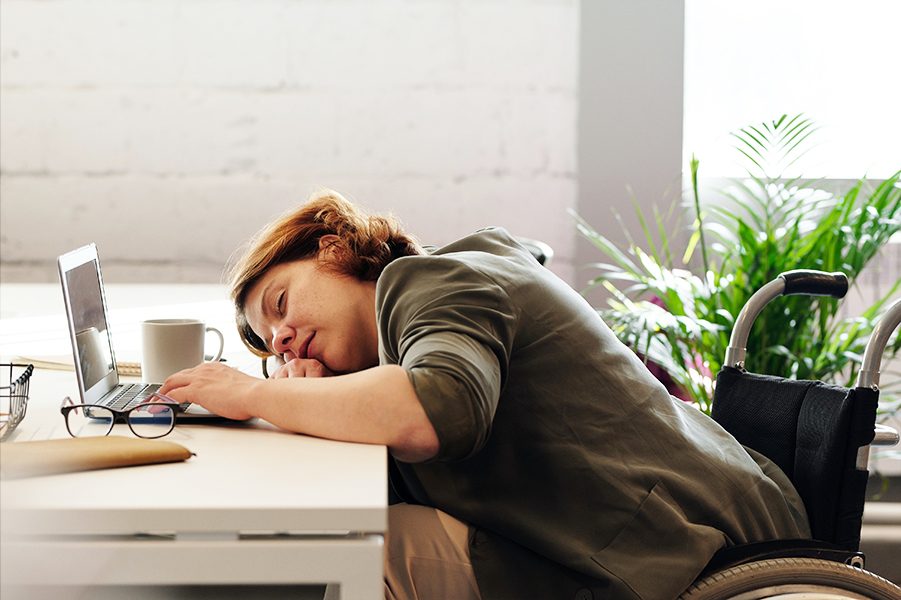We’re back! After 18 months of lockdowns, furlough schemes, zoom calling and home working, employees have returned to the
By Making Moves London
August 2, 2021
We’re back! After 18 months of lockdowns, furlough schemes, zoom calling and home working, employees have returned to the office in full force, buoyed by their new-found freedom and energised by the camaraderie of the workplace. But a word of warning here, such energy and enthusiasm to return to normality can soon lead to fatigue or even burnout if the return to the office is not managed effectively.
Indeed, the early morning commute and five-day in-office working week can be a shock to the system – not to mention the demands of being pulled from one in-person meeting to another. Plus, while for some reconnecting with colleagues is a welcome comfort, for others it can be a source of social exhaustion.
So, how do we reduce fatigue when returning to the office?
Before your employees return to the office, consider conducting a survey (where responses can be anonymous, if preferred) to understand their expectations and concerns. What do employees want from their workspace? What do they need to support their transition from home to office working?
And when you receive this valuable employee insight, respond proactively. Fostering a feedback culture is integral to identifying fatigue and preventing burnout, therefore it is important that employees feel able to voice their experience as they navigate this new working world.
Communication is key when introducing any change to the workplace. Keep excessive, instructional signage to a minimum – particularly when it comes to implementing new health and safety protocols; rather, talk to your people. Most importantly, communicate the “why” to reduce anxiety and resistance, as well as to manage employee expectations and avoid causing unnecessary stress.
It is well-researched that the working environment can have a significant impact on employee wellbeing. Key considerations to ensure a healthy workplace – for both mental and physical health – include quality and quantity of light, temperature, humidity and acoustics, but also access to outdoor spaces or biophilic office design (bringing the outside in), sensory detailing and sustainability
The office provides a fantastic space for creativity and collaboration, but it can also impact productivity through increased workplace distractions – and depleted productivity can soon lead to mounting to-do lists and overwhelm.
It may, therefore, be time to rethink your office space. Does an open plan working environment work for your people? Consider offering a variety of spaces or microenvironments and encourage employees to move between these workspaces throughout the day. Being tethered to a desk is not always conducive to productivity; rather, thinking spaces, energising areas, breakout booths and collaboration corners allow people to choose to work in the environment where they’ll be most productive.
With big brands permanently adopting a hybrid working model and Bloomberg recently reporting 39% US workers would leave a company that didn’t offer remote working, the physical office needs to be able to flex with an expanding and contracting workforce.
The challenge here is how to utlise the space you have in the most efficient and effective way. While some may gasp in horror at the hotdesk, if managed correctly this could offer an agile option for employees’ comings and goings. Reverse desk hoteling is another effective solution for ensuring workspaces are fully-utilised – that is, reallocating permanent desks to flexible workers when office-based employees are on holiday or out of the office.
Finally, relaxation and wellbeing spaces are integral to reducing return-to-office fatigue. Employees are leaving behind their home working environment where opportunities to powernap at lunch, take a conference call while walking, work from the sofa or make umpteen cups of coffee were regular and welcome occurrences. Indeed, during lockdown, the expectation was for employees to turn their homes into offices, in turn offices now need to offer these home comforts to their people.
If you would like to speak to someone about how to best equip your office for life after lockdown, our team are always on hand to help. Call us at 020 3595 3121, or email info@makingmoves.london.

🚚 Source, negotiate and manage entire office moves.
🏢 Dispose, sublet or redesign your office.
🖊️ Professional, independent support.